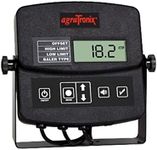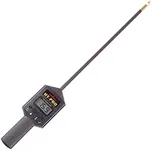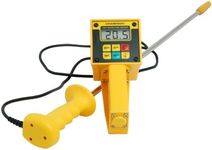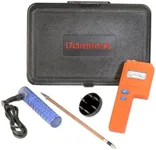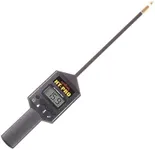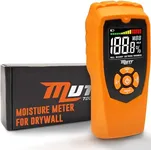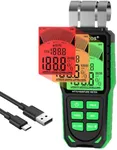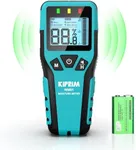Buying Guide for the Best Hay Moisture Testers
Choosing the right hay moisture tester is crucial for ensuring the quality and safety of your hay. A good hay moisture tester helps you determine the moisture content in your hay, which is important for preventing mold growth and spontaneous combustion. When selecting a hay moisture tester, consider the following key specifications to find the best fit for your needs.Moisture RangeThe moisture range indicates the range of moisture levels that the tester can measure. This is important because different types of hay and storage conditions may require different moisture levels. Typically, a moisture range of 8% to 40% is sufficient for most hay types. If you are dealing with very dry or very wet hay, you may need a tester with a wider range. Choose a moisture range that covers the typical moisture levels of the hay you are working with.
AccuracyAccuracy refers to how close the tester's readings are to the actual moisture content. This is crucial for making informed decisions about hay storage and usage. Accuracy is usually expressed as a percentage, such as ±1%. Higher accuracy is better, but it may come at a higher cost. For most users, an accuracy of ±1% to ±2% is sufficient. If you need very precise measurements, look for a tester with higher accuracy.
Probe LengthThe probe length determines how deep the tester can measure moisture within a bale of hay. This is important for getting an accurate reading, especially in large bales. Common probe lengths range from 10 inches to 24 inches. For small bales, a shorter probe may be sufficient, while larger bales may require a longer probe to reach the center. Choose a probe length that matches the size of the bales you typically handle.
Display TypeThe display type refers to how the moisture readings are shown on the tester. Common display types include digital screens and analog dials. Digital screens are easier to read and often provide more precise readings, while analog dials are simpler and may be more durable. Consider your preference for readability and ease of use when choosing a display type.
Temperature CompensationTemperature compensation adjusts the moisture readings based on the temperature of the hay, providing more accurate results. This is important because temperature can affect moisture readings. Some testers have automatic temperature compensation, while others require manual adjustment. If you frequently test hay in varying temperatures, look for a tester with automatic temperature compensation for convenience and accuracy.
DurabilityDurability refers to how well the tester can withstand regular use and harsh conditions. This is important for ensuring the tester lasts a long time and provides reliable readings. Look for testers made from sturdy materials and with good build quality. If you work in tough environments, consider a tester with additional protective features, such as water resistance or shockproof design.
